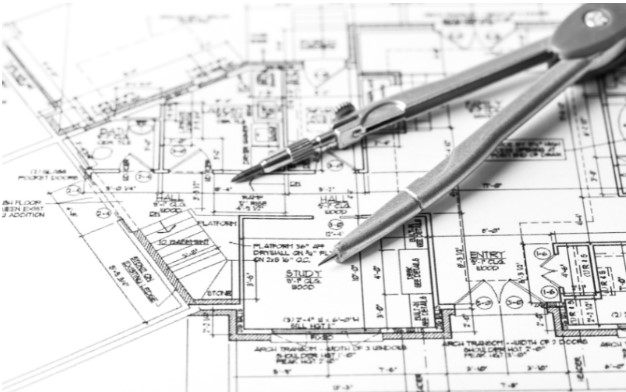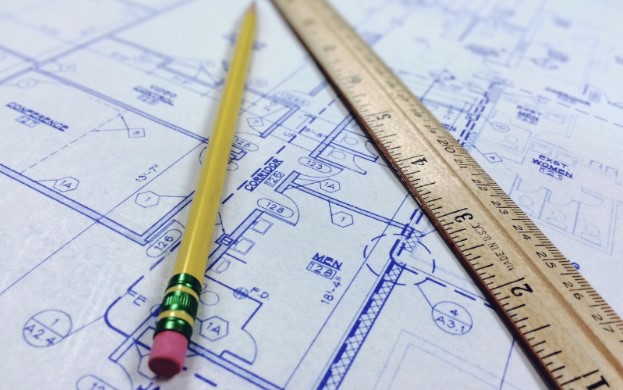Have you ever looked up at a towering skyscraper, marvelled at a stunningly designed building, and wondered who was behind its creation? The answer lies in the hands of Geelong architects, the designing visionaries who turn dreams into reality. Architects are more than just designers; they are storytellers, problem-solvers, and innovators.
This article will delve into the exciting and multifaceted world of architects, uncovering their creative processes, diverse skill sets, and impact on shaping the world around us. Get inspired as we look closer at the art of designing dreams.
What is Architecture?
Architecture can be defined as the art and science of designing and constructing buildings and other physical structures that are functional, aesthetically pleasing, and meet the needs of the people who use them. This involves creating plans, drawings, and specifications for the structure and overseeing the construction process to ensure that the final product is high quality and meets the necessary standards.
One source for this definition is the American Institute of Architects (AIA), which defines architecture as “the art and science of designing and creating buildings and other physical structures that are functional, safe, and aesthetically pleasing” (AIA, n.d.). Another source is the Royal Institute of British Architects (RIBA), which describes architecture as “the art and science of designing and creating buildings and other physical structures that are beautiful, functional, and sustainable” (RIBA, n.d.).
Overall, the definition of architecture highlights this field’s interdisciplinary nature, which requires artistic and technical skills to create buildings and structures that are functional, safe, visually appealing, and sustainable for the environment.
References:
American Institute of Architects (n.d.). What is Architecture? Retrieved from https://www.aia.org/resources/14321-what-is-architecture
Royal Institute of British Architects (n.d.). What is Architecture? Retrieved from https://www.architecture.com/knowledge-and-resources/knowledge-landing-page/what-is-architecture
The Role of an Architect

An architect is professionally trained and licensed to plan, design, and oversee the construction of buildings and other physical structures. The role of an architect is crucial in ensuring that facilities are safe, functional, and aesthetically pleasing. Architects must consider various factors when designing a building, including its intended use, the site on which it will be built, and the materials and technology available for construction.
One of the primary responsibilities of an architect is to create a design that meets their client’s needs while also adhering to local building codes and regulations. This requires a thorough understanding of construction materials, systems, and technologies and a deep knowledge of structural engineering, environmental systems, and other fields.
In addition, the history of interior design can be traced back to ancient civilizations, where art and architecture were intricately intertwined to designing the physical structure of a building, architects may also be responsible for overseeing the construction process, managing budgets, and ensuring that the project is completed on time and within budget. They may also work closely with other professionals, such as engineers, contractors, and interior designers, to ensure that all aspects of the project are coordinated and integrated.
An architect’s role is to create safe, functional, and aesthetically pleasing buildings while meeting their client’s needs and desires. They must balance practical considerations with creative vision and technical expertise and work closely with other professionals to ensure the project succeeds.
A Deep Dive into the Creative Process of Architect
The creative process of architects is complex and multifaceted, requiring a blend of technical expertise, artistic vision, and practical considerations. Architects must be able to balance the desires of their clients with the limitations of the site, budget, and building codes to create a successful design.
1. Research
Architects begin the creative process by researching various factors that can influence the design of the building. This research typically includes gathering information about the site, and client needs and preferences, and relevant regulatory requirements.
Architects may also research various design elements, such as form, function, aesthetics, materials, and sustainability. This can involve reviewing case studies of similar projects, consulting with experts in relevant fields, and staying up-to-date with the latest advances in building technology and design.
2. Ideation
Architects use their knowledge and creativity to generate initial ideas and concepts for the building design. This is a crucial stage where the architect’s creative vision begins to shape. The ideation process can take many forms, depending on the architect’s approach and the specific project requirements. For example, some architects may start by sketching ideas on paper or using computer-aided design (CAD) software. In contrast, others may prefer to create physical models to explore different designing possibilities.
During ideation, architects consider various factors influencing the designing, including the client’s needs and preferences, the site conditions, the budget, and the project timeline. They also consider various designing elements, such as form, function, aesthetics, materials, and sustainability. The ideation stage is about exploring different ideas and possibilities and generating a range of options that can be refined and developed further in later stages of the design process.
3. Feedback
During feedback, architects may present their ideas through various means, such as sketches, digital models, or physical mockups. Clients and other stakeholders can then review the designs and provide feedback, suggestions, or changes they want to incorporate into the final design.
Feedback can come from various sources, including the client, other design team members, regulatory authorities, and other stakeholders such as neighbourhood groups or public officials. Architects must carefully consider all feedback received, balancing the needs and requirements of different stakeholders while also maintaining the creative vision for the project.
4. Refinement
After gathering feedback and incorporating changes during the feedback stage, architects move into the refinement stage. During this stage, architects refine their designs, including any necessary changes or modifications and ensuring the plan meets all technical and regulatory requirements.
5. Coordination
The coordination stage is the fifth stage of the creative process for architects. During this stage, architects work closely with contractors, engineers, and other design team members to ensure that the building is constructed according to the design specifications and meets all technical and regulatory requirements.
Coordination involves various tasks, such as reviewing and approving construction plans, monitoring construction progress, and addressing any issues or challenges during construction. Architects must also be able to communicate effectively with other design team members and make any necessary adjustments to the design or construction plans as needed.
6. Implementation
The final stage of the architectural process is the implementation stage, where the design is implemented and the building is constructed. During this stage, architects oversee the construction process, ensuring that the building is built according to the design specifications and meets all technical and regulatory requirements.
Implementation involves various tasks, such as site visits, construction inspections, and monitoring construction progress. Architects must also be able to communicate effectively with contractors and other construction team members to ensure that the building is constructed efficiently and within budget while maintaining the design’s aesthetic and functional goals.
Architects use various tools and techniques to communicate their ideas throughout this process, including hand sketches, computer-aided design software, 3D modelling, and physical models. They also draw on their knowledge of construction methods, materials, and building systems to ensure the design is aesthetically pleasing and functionally sound. By balancing creativity, technical expertise, and practical considerations, architects can create buildings that meet their client’s needs while contributing meaningfully to the built environment.
The Diverse Skill Set of Architects

Design thinking: Architects are trained to think creatively and critically about complex design problems. They can approach design challenges from multiple angles, using creative thinking tools and techniques to develop innovative solutions.
Technical expertise: Architects strongly understand building systems, materials, and construction techniques. They can read and interpret complex building codes and regulations and ensure their designs meet all technical and safety requirements.
Communication skills: Architects must be able to communicate effectively with a range of stakeholders, including clients, contractors, engineers, and other members of the design team. They must articulate their design vision clearly and persuasively and work collaboratively with others to achieve their goals.
Project management: Architects are skilled project managers who oversee the entire design process from concept to completion. They can develop detailed project plans, manage budgets and timelines, and coordinate the work of multiple stakeholders to ensure that projects are completed on time and within budget.
Cultural awareness: Architects must be sensitive to cultural and social issues and able to design buildings appropriate for their context. They must balance clients’ needs and desires with the broader community’s needs and ensure their designs are socially and environmentally sustainable.
Creativity and imagination: Architects are highly creative and imaginative, able to develop unique and innovative designs that push the boundaries of conventional thinking. They can draw inspiration from various sources, from art and literature to history and culture, and use their imagination to create beautiful, functional, and inspiring buildings.
Computer skills: Architects must be proficient in various computer programs and technologies, including 3D modelling software, computer-aided design (CAD) software, and building information modelling (BIM) software. They must also be able to use a range of digital tools and technologies to communicate their designs effectively.
Architects’ diverse skill set reflects the architectural profession’s complexity and breadth. Architects must be able to think creatively and critically, communicate effectively with a range of stakeholders, manage complex projects, and balance the needs and desires of clients with the needs of the wider community. By combining their technical expertise with their creativity and imagination, architects can create innovative, functional, and aesthetically pleasing buildings that meet the needs of their clients and contribute to the built environment in meaningful ways.
The Profound Impact of Architecture on Society

Physical and emotional well-being: Architecture has a profound impact on the physical and emotional well-being of individuals. Well-designed buildings can enhance our quality of life by providing comfortable and healthy living spaces, reducing stress, and improving our mood and overall well-being.
Economic development: Architecture plays a significant role in economic development by creating jobs, stimulating investment, and attracting tourism. Iconic buildings and landmarks can become important tourist attractions, generating revenue for local businesses and contributing to the local economy.
Environmental sustainability: Architecture significantly impacts the environment, with buildings accounting for a large percentage of global energy consumption and carbon emissions. Sustainable architecture practices, such as green building design, energy-efficient technologies, and renewable energy sources, can help reduce buildings’ environmental impact and promote a more sustainable future.
Cultural identity: Architecture is an essential expression of cultural identity, reflecting the values, beliefs, and history of a particular society or community. Buildings and public spaces can serve as symbols of national or regional identity, helping to foster a sense of community and belonging among residents.
Social inclusion: Architecture has the power to promote social inclusion by creating spaces that are accessible and welcoming to people of all ages, abilities, and backgrounds. Buildings that are designed with universal designing principles, such as wheelchair accessibility and clear wayfinding, can help to create a more inclusive and equitable society.
Urban revitalisation: Architecture can be crucial in urban revitalisation by transforming abandoned or neglected buildings into vibrant public spaces, cultural centres, or commercial spaces. This can revitalise neighbourhoods, attract new businesses and residents, and promote economic growth.
Bishop Architects: Shaping Built Environment and Enhancing Our Lives
Architecture is a dynamic and evolving field that profoundly impacts our daily lives. From homes to public spaces, architecture shapes our built environment and influences our behaviour, health, and well-being. As dependable Geelong architects, we are dedicated to creating innovative and sustainable designs that respond to our client’s needs while enhancing our region’s social, cultural, and economic vitality.
At Bishop Architects, we are passionate about architecture’s potential to shape a better future. Our team of experienced architects, designers, and planners collaborate closely with clients to create buildings and public spaces that are functional, beautiful, and sustainable. From residential and commercial projects to community facilities and urban design, we are committed to creating lasting and positive change in our communities.
Whether you want to build your dream home, enhance your business’s brand, or shape your community’s future, Bishop Architects is here to help. Contact us today to learn more about our architectural services and how we can help bring your vision to life.
Give us a ring to schedule a consultation with one of our Geelong architects and discover how we can help you achieve your architectural goals.

